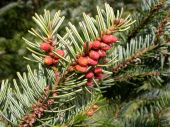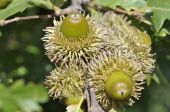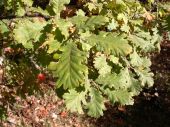The Park of Gallipoli Cognato offers a unique spectacle of vegetation consisting of trees, flowers and rare and sometimes unique nature.
The vegetative coat differs according to the altitude, exposure and humidity, with the presence of oak (Quercus Cerris), which is the most widespread arboreal specimen.
There are between 800 and 1,000 meters of altitude, the wild Apple tree, the field maple, the maple fig tree that, in autumn, create the beautiful reddish spots.
Database of the flora of the Park
The flora database is available to learn about the species so far listed by the Park
In the Bosco di Montepiano, near Accettura, one can see columnar oaks and two different arboreal layers: the first, dominant, consisting of oaks and sessile oaks, overlooks the second of maples, hornbeams and lime trees. The white hornbeam and the rare holly can be seen at the highest altitudes. At these altitudes, the vegetation becomes dense and sometimes impenetrable with trees often covered with ivy with powerful stems.
Near the Lucanian Dolomites, near Pietrapertosa, woods of chestnut trees appear. We have to underline the presence of the Onosma Lucana, an exclusive endemic species discovered by Lacaita, and the Dalmatian Linaria with yellow flowers, of which the Pietrapertosa cliffs are one of the rare areas of presence in Italy currently known.
In the areas where the vegetation is more regular and less dense the woods are rich in numerous plants such as ferns, cyclamens, white and blue anemones; in clearings, the sapphire with its deep yellow flowers and the Knautia Lucana, another endemic species exclusive to the area, discovered by Lacaita, dominate.
Along the slopes of Mount Caperrino, covered by oak woods and pastures, in spring there are vast blooms of orchids, anemones and buttercups. The numerous paths traced in the Park will allow you to live an unchanged nature and never without surprises.

















 Il presente sito si ispira alle nuove linee guida di design per i servizi web delle PA
Il presente sito si ispira alle nuove linee guida di design per i servizi web delle PA